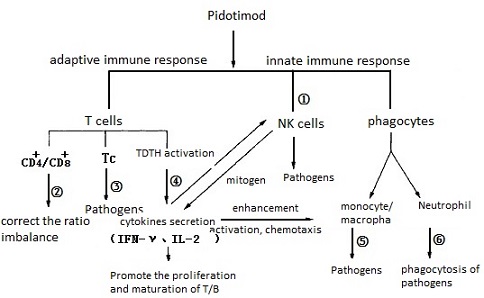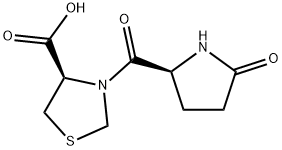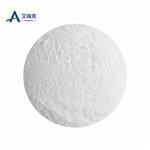Pidotimod, chemical name (4R)-3-(5-oxo-L-prolyl)-1,3-thiazolidine-4-carboxylic acid, is a representative of synthetic immunostimulants, its structure is similar with dipeptide. Pidotimod has anti-toxicity, anti-oxidation, anti-irritation, anti-infectivity properties etc.; it can promote both innate immunity responses and adaptive immunity responses. Clinically it is mainly used to treat children with recurrent respiratory infections, chronic bronchitis, recurrent urinary tract infections, other chronic diseases caused by machine body with low immune function and to reduce the recurrence of tumor. Pidotimod can be rapidly absorbed, excreted with no accumulation in the body, with good tolerance and with no restriction on the age of patients.
Pidotimod was originally developed by Poli Industria Chimica S.p.A, Italy. It was listed in 1993 and put into clinical practice. In 2003 our country imported pidotimod oral solution. At present, there are few approved raw material manufacturers to produce pidotimod.
Immunomodulators are drugs that regulate the function of the immune system. Studies have found that some immunomodulators do not have effect on the normal immune system, but can enhance the function of the immune system and regulate the immune responses. Pidotimod is a synthetic immunosuppressive agent with dipeptide like structure, and promote both innate and adaptive immunity of the machine body. On the one hand, pidotimod can block phagocytosis of cyclophosphamide on phagocytic cells (monocyte/macrophage, neutrophils, and etc.) and the suppression effect of cyclophosphamide on the proliferation of lymphocyte, enhance the phagocytosis of phagocytic cells, increase the cell chemotaxis, enhance the sensitivity of B cells, produce more antibodies to against foreign bodies, especially increase the production of protective secretory IgA; activate the natural killer cell (NK) to regulate the balance of T cells in the immune system; stimulate the proliferation of B/T lymphocyte. On the other hand, by stimulating the production of cytokines, interleukin-2 and interferon-y, pidotimod can further promote the phagocytosis of phagocytic cells, the activation of lymphocyte and cellular immune response; correct the imbalance of CD4+/CD8+ ratio in pathological condition to regulate the body’s immune system to the steady state under normal physiological condition. Furthermore, pidotimod can enhance deficitary feedback mechanism between the hypothalamic-pituitary-adrenal (HPA) axis and interleukin-1 (IL-1). Further studies have shown that: pidotimod could reconstitute the cellularity of the pritoneum and of the spleens of mice immunodepressed by mPDN. Pidotimod stimulate production of cytokines and other effects, the mutual coordination and restraint of vary cytokines and immune cells to adjust the immune system disorder in pathological condition to the normal body immunity.

Figure 1: Function mechanism of pidotimod
①: Pidotimod activates natural killer cells.
②: Pidotimod can correct the imbalance of CD+4/Cd+8 ratio.
③: Pidotimod can increase the activity of T cells and enhance the ability of T cells to eliminate virus.
④: Pidotimod can increase the level of IL/2 and IFN-γ in the immune response, enhance the body immunity.
⑤: Pidotimod can promote the activity of macrophage.
⑥: Pidotimod can quickly increase the chemotaxis of neutrophils.





